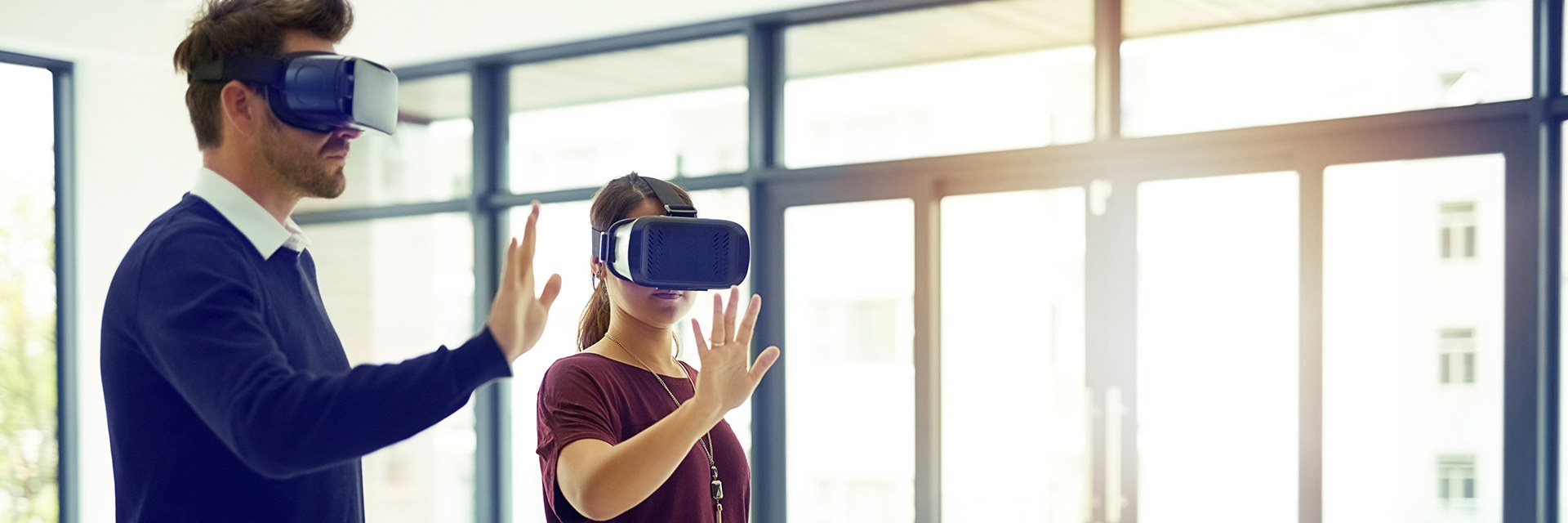
Digitalisation and cooperation in construction
As part of a project with research and industry partners, we are designing future, digital work models for the world of construction.
It is becoming increasingly common to jointly process digital models (often called “building information model” or “BIM”) using virtual or augmented reality programmes in the planning office or on the construction site. While this harbours some potential, it also poses challenges to the way partnerships between the different disciplines are structured.
Greater transparency on planning and construction progress can help build mutual trust when key processes such as awarding contracts, planning projects and processing construction are set up in such a way as to encourage cooperation from the outset. As structures and processes which foster cooperation are developed, the need for expertise in technical display and input formats is changing accordingly.
As part of the MR and innovation lab (VTI-Lab), we are dealing with questions regarding the quality of decisions based on digital models, developing cooperation models and optimising the ergonomics and usability of various ways of interacting with these models.
Project Dates
Lead and Team | Prof. Dr. Hartmut Schulze, MSc Applied Psychology Livia Suter |
Funding | Project submissions to different project sponsors, such as the Commission for Technology and Innovation and the Bridge programme run by the Swiss National Science Foundation. |
Collaboration | Prof. Manfred Huber, FHNW School of Architecture, Civil Engineering and Geomatics; Prof. Stella Grivas Gatziu, FHNW School of Business; Prof. Doris Agotai, FHNW School of Engineering; Prof. Dominique Brodbeck, FHNW School of Life Sciences. Business partners: including HHM, Vitra, Losinger & Marazzi, Gruner |
Duration | January 2018 - December 2020 |
Publications | Wäfler, T., Kohli, B., Schlaeppi, M. & Schulze, H. (2017). Plattform Innovation 4.1: Kooperationen zwischen KMUs hinsichtlich soziotechnischer Innovation im digitalen Wandel. [Platform Innovation 4.1: Cooperation between SMEs with regard to socio-technical innovation in the age of digital transformation.] In Gesellschaft für Arbeitswissenschaft e.V. (ed.), report on the 63rd ergonomics conference of 15 to 17 February 2017. Dortmund: GfA Press. Ryser, T., Angerer, E., Ganesh, M. P., & Schulze, H. (2016). Towards a Model of Collective Competences for Globally Distributed Collaborations. In J. Flecker (Ed.), Space, Place And Global Digital Work (Dynamics o, pp. 201–225). London: Palgrave Macmillan. Schulze, H. (2014). Erfahrungsgeleitete Büroraumgestaltung – ein Blick zurück nach vorn. [Experience-based office design – a glimpse back to the future.] In: Clases, Chr., Dick, M., Manser, T. & Vollmer, A. (eds.). Grenzgänge der Arbeitsforschung. Eine Festschrift für Theo Wehner. [Crossing boundaries in labour studies. A commemorative publication dedicated to Theo Wehner.] Lengerich: Pabst Verlag van den Anker, F. W. ., & Schulze, H. (2006). Scenario-Based Design of ICT-Supported Work. In W. Karwowski (ed.) (pp. 3348–3353). New York: Taylor & Francis. |
